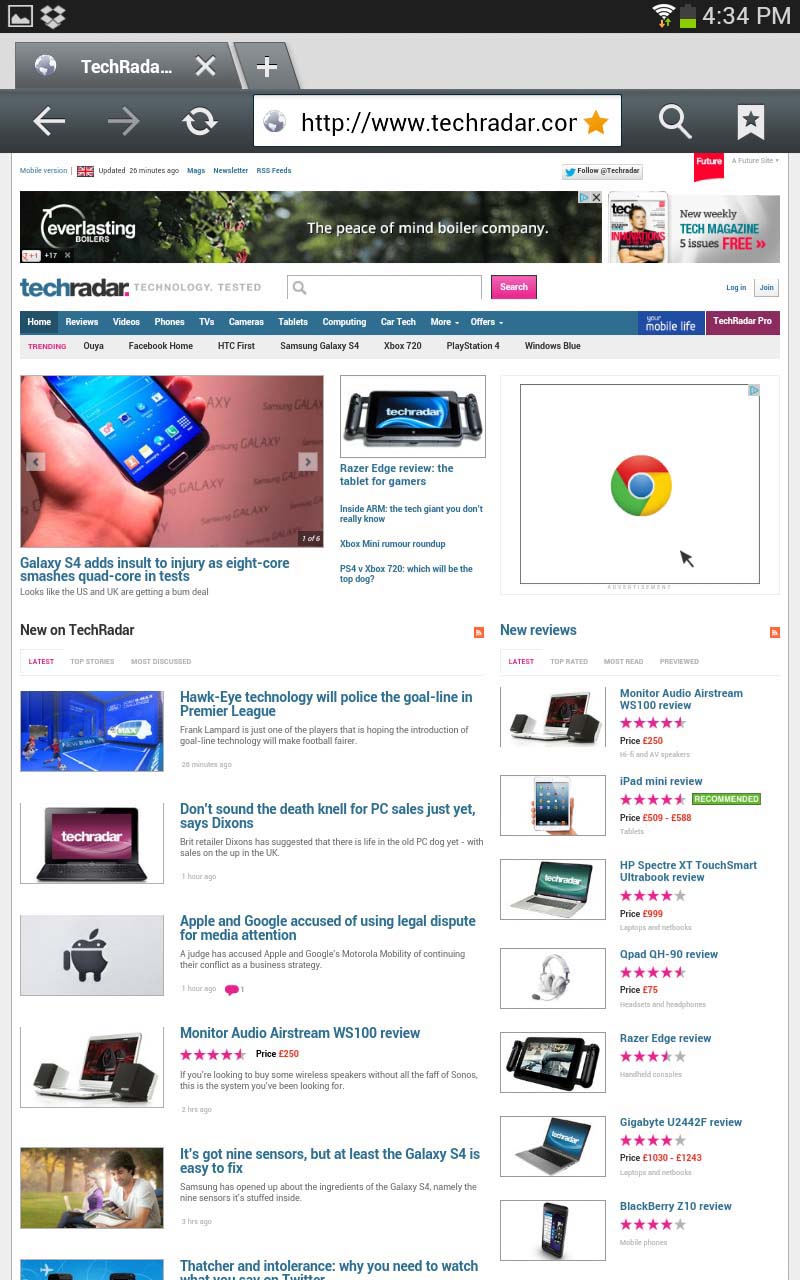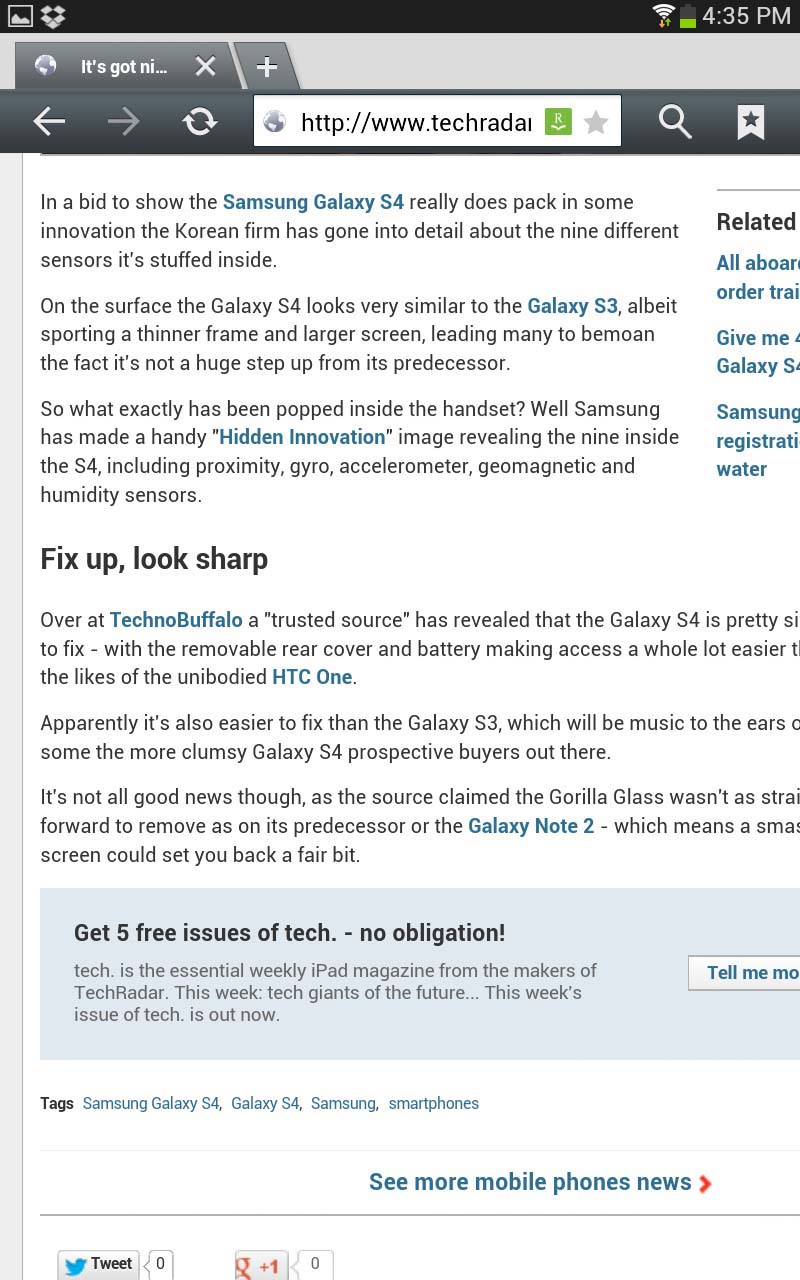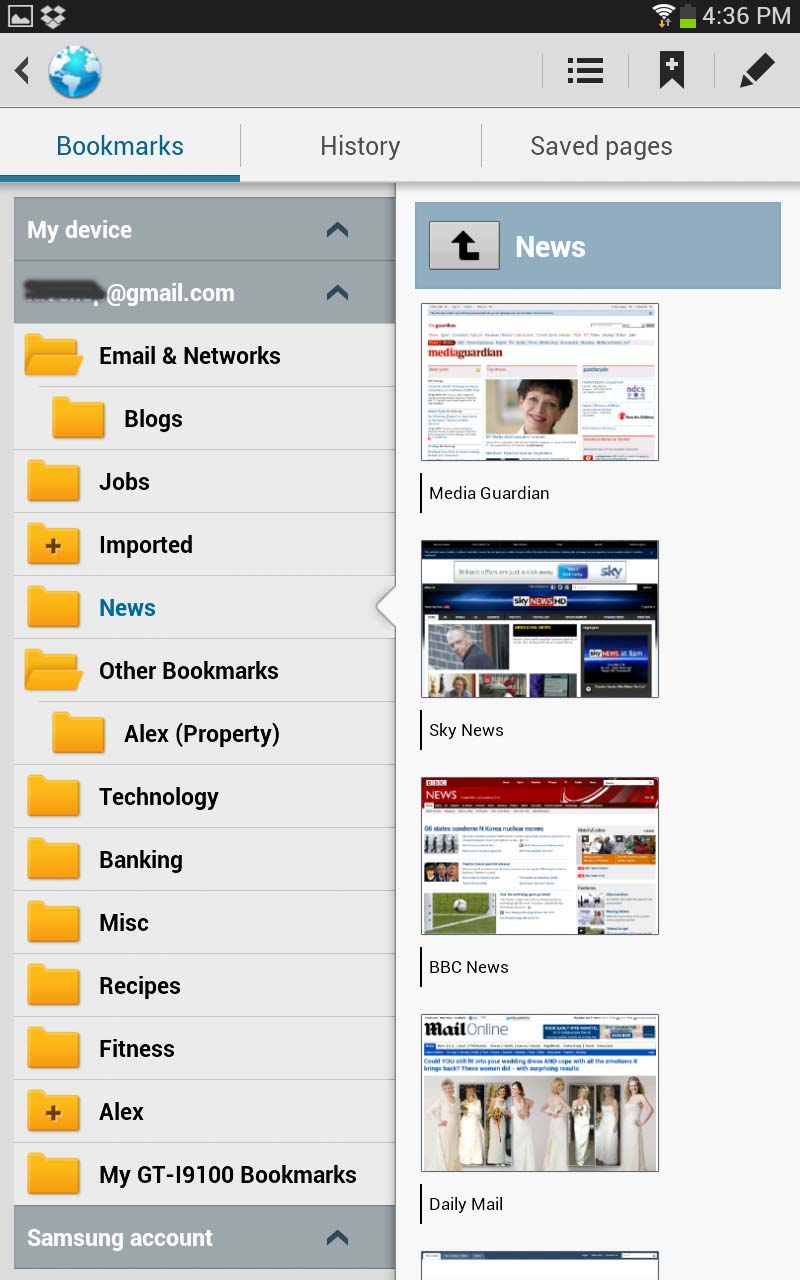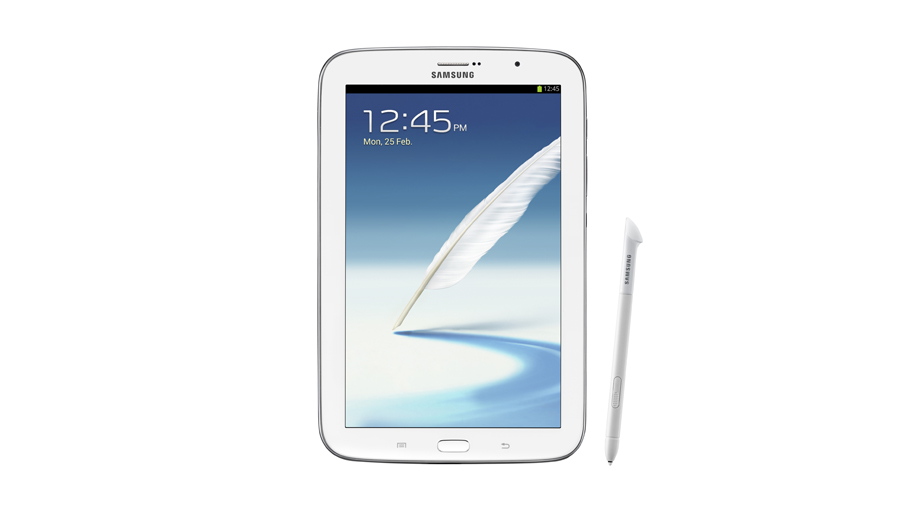Why you can trust TechRadar
Odds are that if you're buying a Galaxy Note 8.0, you'll be doing a fair bit of web browsing. Which is good news really - because this thing is built for the web.

As we've pointed out, the cellular version of this device has been announced, but we're still waiting on official word as to when and where this will be available.
It's not uncommon for manufacturers to launch the Wi-Fi models before the 3G/4G variants (this was the case with both the iPad and the Nexus 7) so we'll assume that it's on the way, but you may have a wait.
That said, it's not so much of an issue for lots of people for two reasons. Firstly, you're more likely than not to have a Wi-Fi connection in your home these days.
And secondly, most smartphones on the market have some kind of tethering ability so many people will find they do actually have access to a web connection if they really need one.

Browsing over Wi-Fi on the Note 8.0 was fast. And we mean blazingly fast. We've just installed a new superhub in our testing location and we wrote this review in another room where we can get a bit of peace.
Normally, a MacBook Pro struggles to get Wi-Fi reception here, but even with one bar on the Wi-Fi signal on the Note 8.0, we had a really good speed.
Sign up for breaking news, reviews, opinion, top tech deals, and more.
Within four seconds of hitting enter, TechRadar's homepage was open and we were able to pan around. When we went closer to the router, that moved nearer to 2.5 seconds. It's definitely something to write home about.
As we only had the Wi-Fi version to test, we tethered the Galaxy Note 8.0 to an HTC One running on EE's LTE network with a full signal. This was like lightning. The TechRadar page again took a good four seconds to load fully - but we were able to pan around and start using the site within two seconds. We're really happy with this speed.

As this is an Android device, you can really use any browser you like - there are loads to pick from in the Play Store.
Google Chrome (now the default browser for Android devices on Jelly Bean) is bundled as standard, but Samsung also gives you its browser, which is very similar to Chrome for Desktop.
We're at a loss as to why Samsung has done this. Yes, HTC does it on the HTC One but that's because HTC has craftily left Flash player enabled in that alternative browser.
Samsung hasn't done so - which means you have two browsers, both of which do exactly the same thing, neither of which offer Flash playback. For a company trying to make this intuitive to newbies, it's an odd logic.

The similarities even extend to the bookmark system - your synchronized Chrome bookmarks will appear on both browsers.
Speaking of which, it's an easy-to-use bookmark system and adding a new one is as simple as just opening up the menu and telling the Note 8.0 you want to add one.
One thing that is conspicuous by its absence (on both browsers) is a competent zooming in system.
We've grown accustomed to devices that let us double tap the screen and have the page zoom right in, and the text reformat to fit the screen.
It didn't happen with the Note 8.0 - instead, it would either zoom in too much, or not enough, and get a bit messy when we were trying to then pinch out to zoom out. It wasn't enough to make us cry - but enough to make us feel slightly aggrieved .
